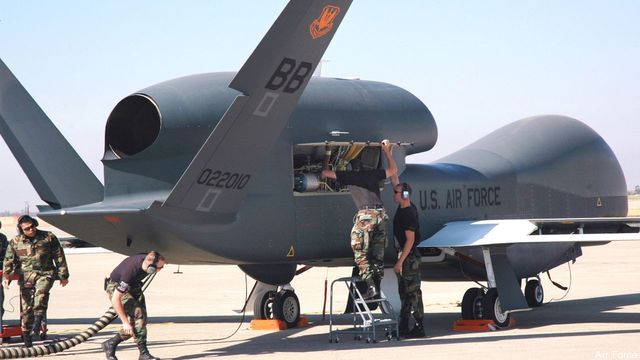Air Force To Cut 10,000; Global Hawks Get Warehoused
Posted on

PENTAGON: The decision to sideline the Global Hawk Block 30 aircraft was made because its sensors aren’t as good as those of the U-2 and the UAV costs more to operate, Air Force Chief of Staff Gen. Norton Schwartz told reporters today.
The Global Hawks sensors are “not as capable” as are those of the U-2, Schwartz said. But the U.S. won’t be scrapping this version of Northrop Grumman’s Global Hawks. Instead, Schwartz said the aircraft will probably go into “usable storage,” although he said the decision was not final.
I asked the general if the warehousing of the Block 30s was a sign that the U.S faces a declining global need for ISR. His answer was not crystal clear but he essentially said that commanders in some parts of the world have faced ISR shortages because of the wars in Iraq and Afghanistan. At the same time, he said that the Air Force did not expect demand for ISR to “generally come down dramatically.” That seems to indicate that they do expect some diminution in the need for ISR assets such as the Global Hawk. And there’s the simple fact that the Pentagon has decided to warehouse aircraft that, while they may be somewhat more expensive to operate and provide data that is not as exquisite, do work. If they were needed, it seems pretty certain the military would use some of them, cost or no.
Add substantial cuts to the budget for unclassified satellite imagery announced yesterday and it seems pretty clear that the U.S. military is betting it can make do with less surveillance and reconnaissance.
Schwartz’s remarks would seem to take the wind out of Northrop Grumman’s efforts to save the Block 30 and blame the “U-2 mafia” for its demise. It’s unlikely the Air Force would make such a decision unless it was pretty sure it stood on firm military ground. “In this particular instance, the U-2 was the better bet,” Schwartz said unequivocally.
In other news, Schwartz said that the Air Force will shrink by another 10,000 airmen. Schwartz was careful to say that the service had made the decision on a military basis, not just to save money. “Importantly, those reductions are tied to force structure going away, so we are not reducing personnel in order to meet budget targets,” Schwartz said at a Pentagon briefing. That force structure includes six fighter squadrons and one training squadron that will be cut.
Subscribe to our newsletter
Promotions, new products and sales. Directly to your inbox.
